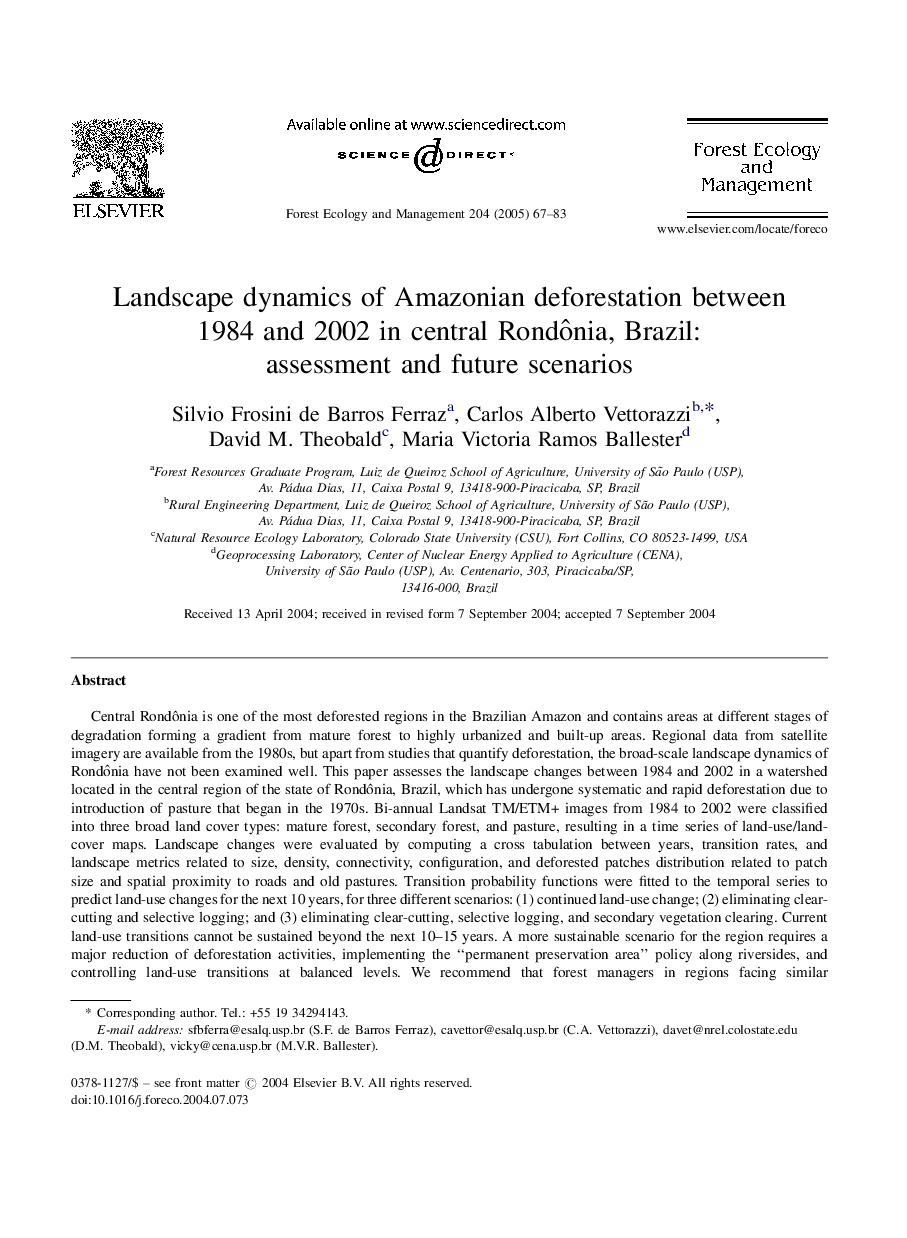| Article ID | Journal | Published Year | Pages | File Type |
|---|---|---|---|---|
| 10250668 | Forest Ecology and Management | 2005 | 17 Pages |
Abstract
Central Rondônia is one of the most deforested regions in the Brazilian Amazon and contains areas at different stages of degradation forming a gradient from mature forest to highly urbanized and built-up areas. Regional data from satellite imagery are available from the 1980s, but apart from studies that quantify deforestation, the broad-scale landscape dynamics of Rondônia have not been examined well. This paper assesses the landscape changes between 1984 and 2002 in a watershed located in the central region of the state of Rondônia, Brazil, which has undergone systematic and rapid deforestation due to introduction of pasture that began in the 1970s. Bi-annual Landsat TM/ETM+ images from 1984 to 2002 were classified into three broad land cover types: mature forest, secondary forest, and pasture, resulting in a time series of land-use/land-cover maps. Landscape changes were evaluated by computing a cross tabulation between years, transition rates, and landscape metrics related to size, density, connectivity, configuration, and deforested patches distribution related to patch size and spatial proximity to roads and old pastures. Transition probability functions were fitted to the temporal series to predict land-use changes for the next 10 years, for three different scenarios: (1) continued land-use change; (2) eliminating clear-cutting and selective logging; and (3) eliminating clear-cutting, selective logging, and secondary vegetation clearing. Current land-use transitions cannot be sustained beyond the next 10-15 years. A more sustainable scenario for the region requires a major reduction of deforestation activities, implementing the “permanent preservation area” policy along riversides, and controlling land-use transitions at balanced levels. We recommend that forest managers in regions facing similar deforestation pressures should strive to maintain at least 35% mature or primary forest, because landscape fragmentation proceeds rapidly below this critical threshold.
Related Topics
Life Sciences
Agricultural and Biological Sciences
Ecology, Evolution, Behavior and Systematics
Authors
Silvio Frosini de Barros Ferraz, Carlos Alberto Vettorazzi, David M. Theobald, Maria Victoria Ramos Ballester,
